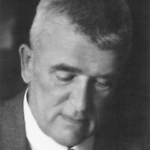Person
Watt, William Shand (1876 - 1958)

William Shand Watt, courtesy of Bureau of Meteorology.
Details
- Born
- 2 January 1876
Green Island, Dunedin, New Zealand - Died
- 15 April 1958
Brighton, Victoria, Australia - Occupation
- Mining engineer and Meteorologist
Summary
William Watt joined the newly formed Commonwealth Bureau of Meteorology as Tasmanian divisional officer in 1911 and eventually rose to become Commonwealth meteorologist, a post he held from 1931 until his retirement in 1940.
Details
William Shand Watt had been assistant to Henry Hunt and was appointed as Commonwealth Meteorologist following successful appeal against the promotion of Henry Barkly. He presided over a difficult period for the Bureau with little support for its scientific development and little awareness in government of the imminent need for major expansion to meet the needs of civil aviation and subsequently the war effort. He participated in the 1935 IMO (International Meteorological Organization) Conference of Directors in Warsaw and the 1937 meeting of IMO Regional Association V (South West Pacific) in Wellington. A Hundred Years of Science and Service, Bureau of Meteorology, 2001.
Chronology
- 1900
- Education - Associateship in Mining and Certificate of Metallurgical Chemistry and Assaying, Otago School of Mines, New Zealand
- 1902
- Career position - Associateship in Metallurgy, Otago School of Mines, New Zealand
- c. 1904 - 1911
- Career position - Lecturer in Mining Engineering at the Zeehan School of Mines in Tasmania
- 1911 - 1921
- Career position - Tasmanian Divisional Officer for the Commonwealth Bureau of Meteorology
- 1921 - 1927
- Career position - Head of the Climatological Section of the Bureau of Meteorology in Melbourne
- 1927 - 1931
- Career position - Assistant Director of the Bureau
- 1931 - 1940
- Career position - Commonwealth Meteorologist
Published resources
Book Sections
- Nash, Heather, 'Watt, William Shand (1876-1958), mining engineer and meteorologist' in Australian dictionary of biography, volume 12: 1891 - 1939 Smy-Z, John Ritchie, ed. (Melbourne: Melbourne University Press, 1990), pp. 416-417. http://www.adb.online.anu.edu.au/biogs/A120460b.htm. Details
Resources
- Wikidata, http://www.wikidata.org/entity/Q21539612. Details
- 'Watt, William Shand (1876-1958)', Trove, National Library of Australia, 2009, https://nla.gov.au/nla.party-1466905. Details
See also
- Federation and Meteorology, 2001, http://www.austehc.unimelb.edu.au/fam/index_w.html. Details
Digital resources
Rosanne Walker
Created: 30 June 1997, Last modified: 5 March 2018
- Foundation Supporter - National Council for the Centenary of Federation
